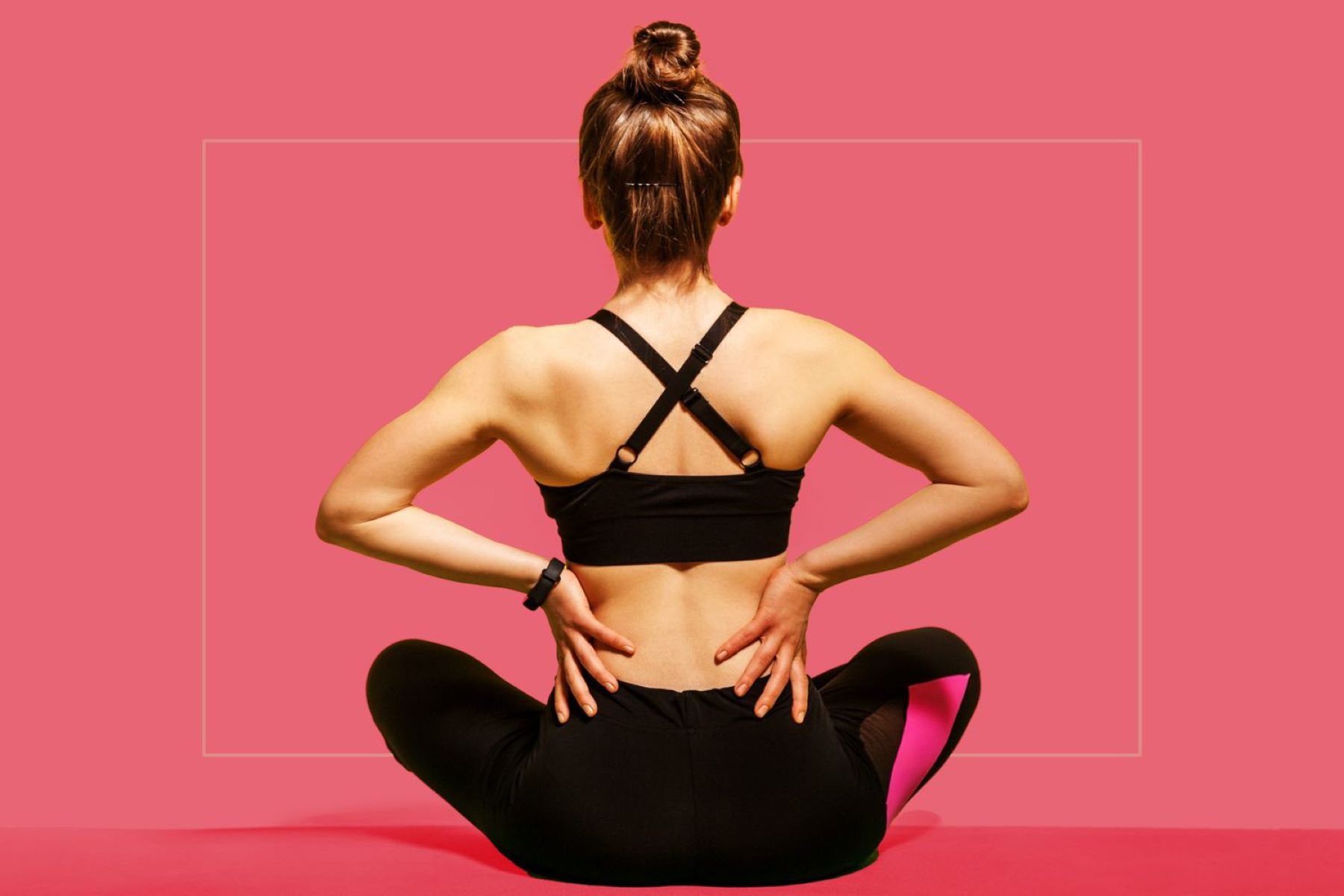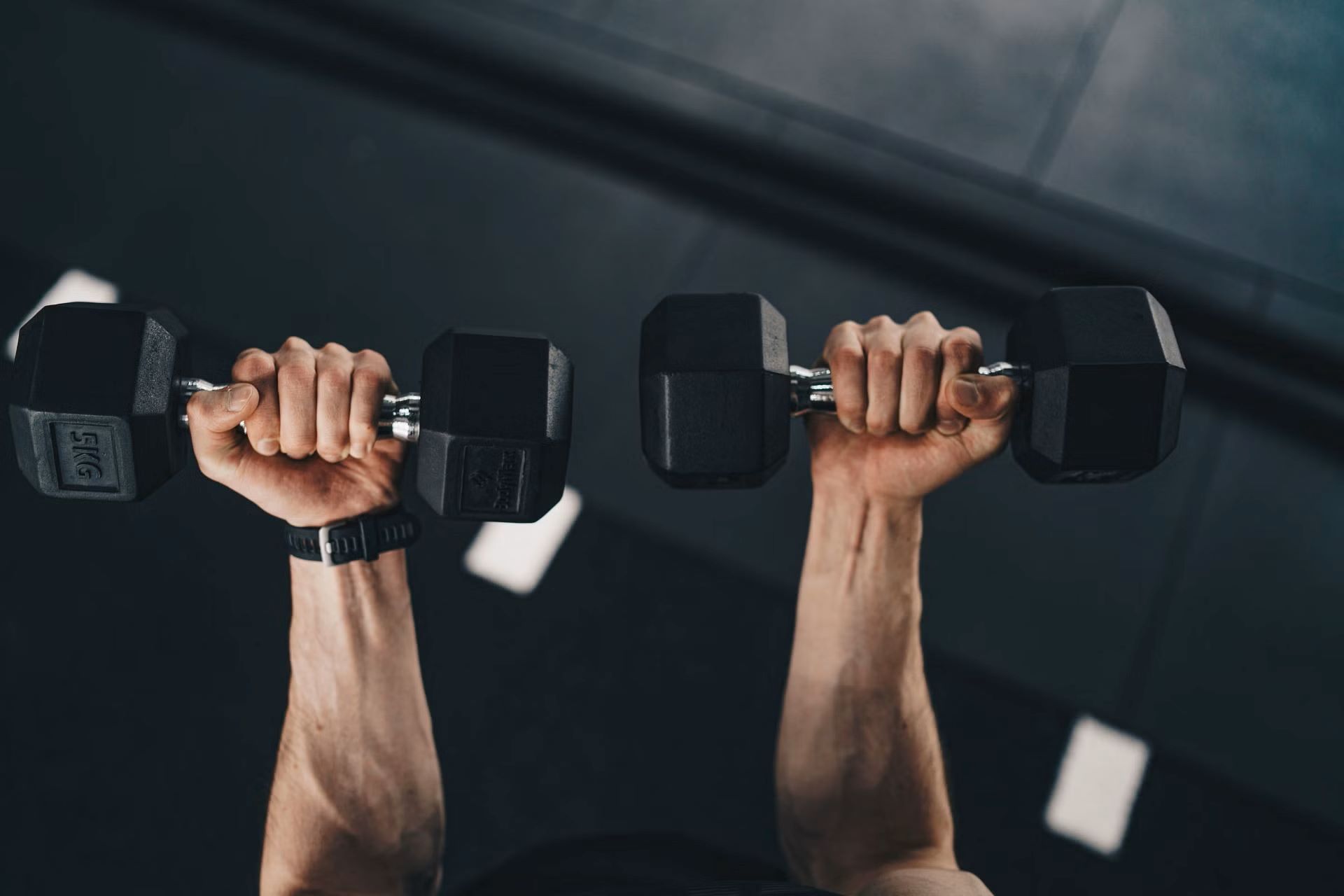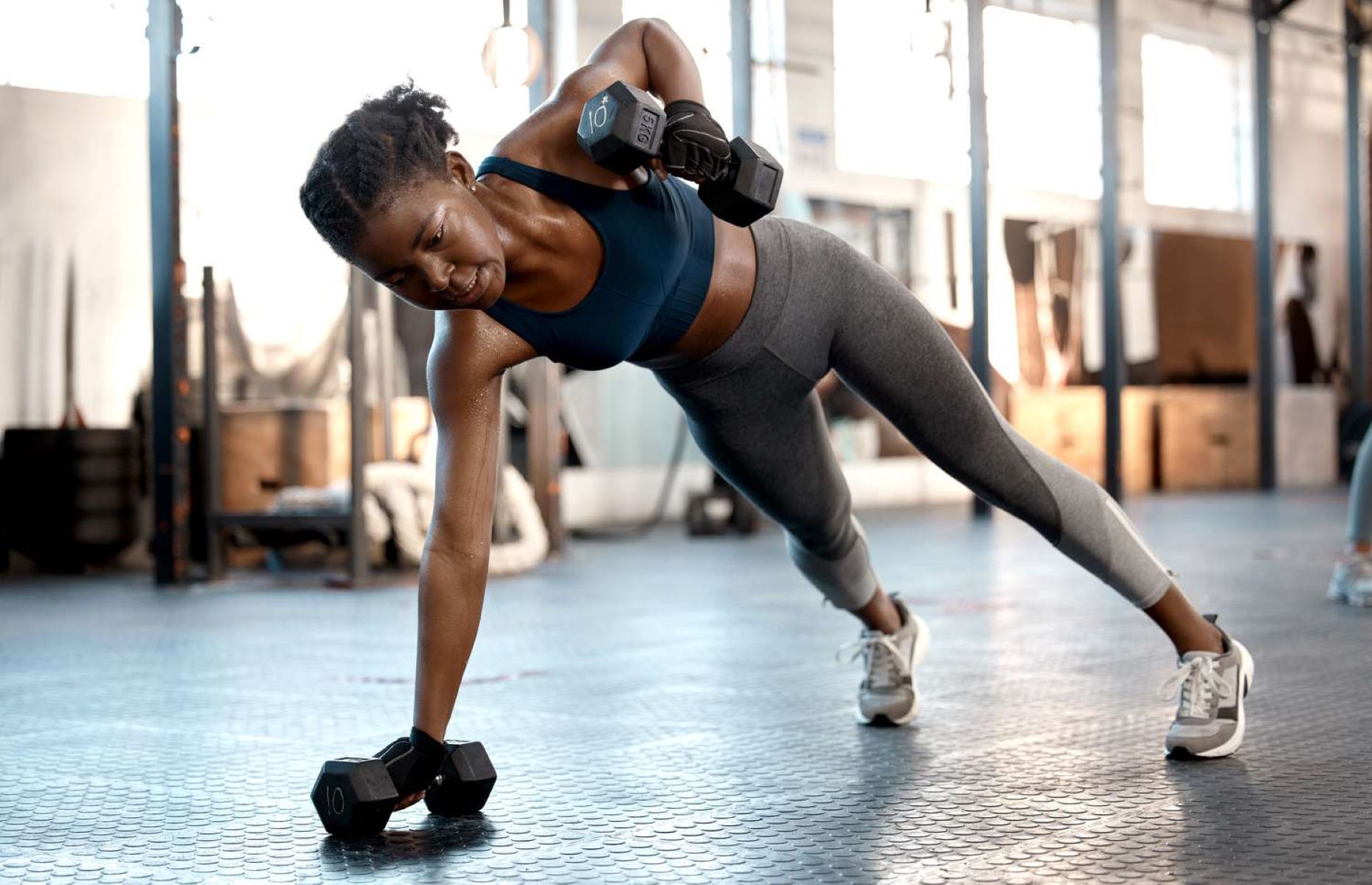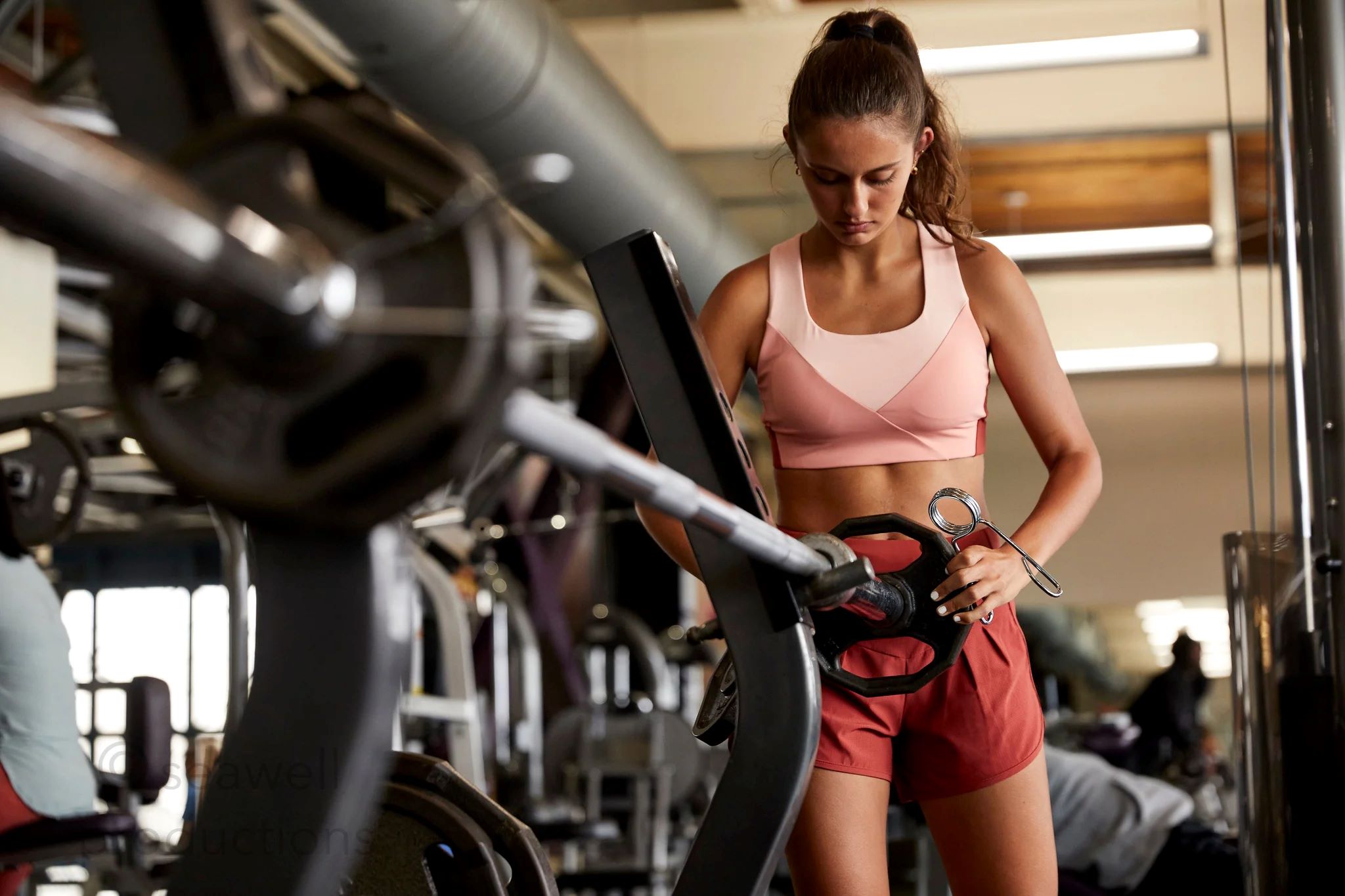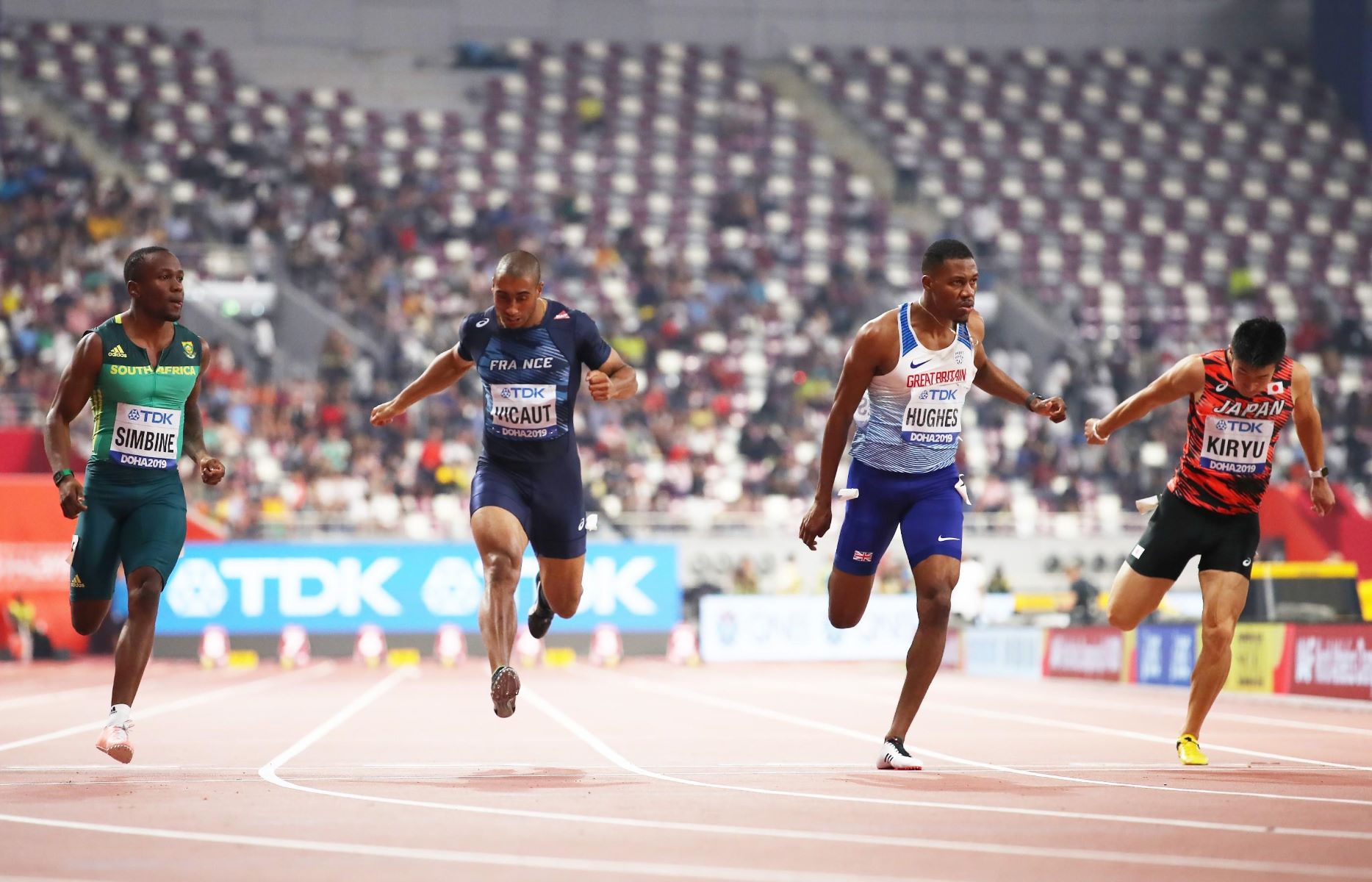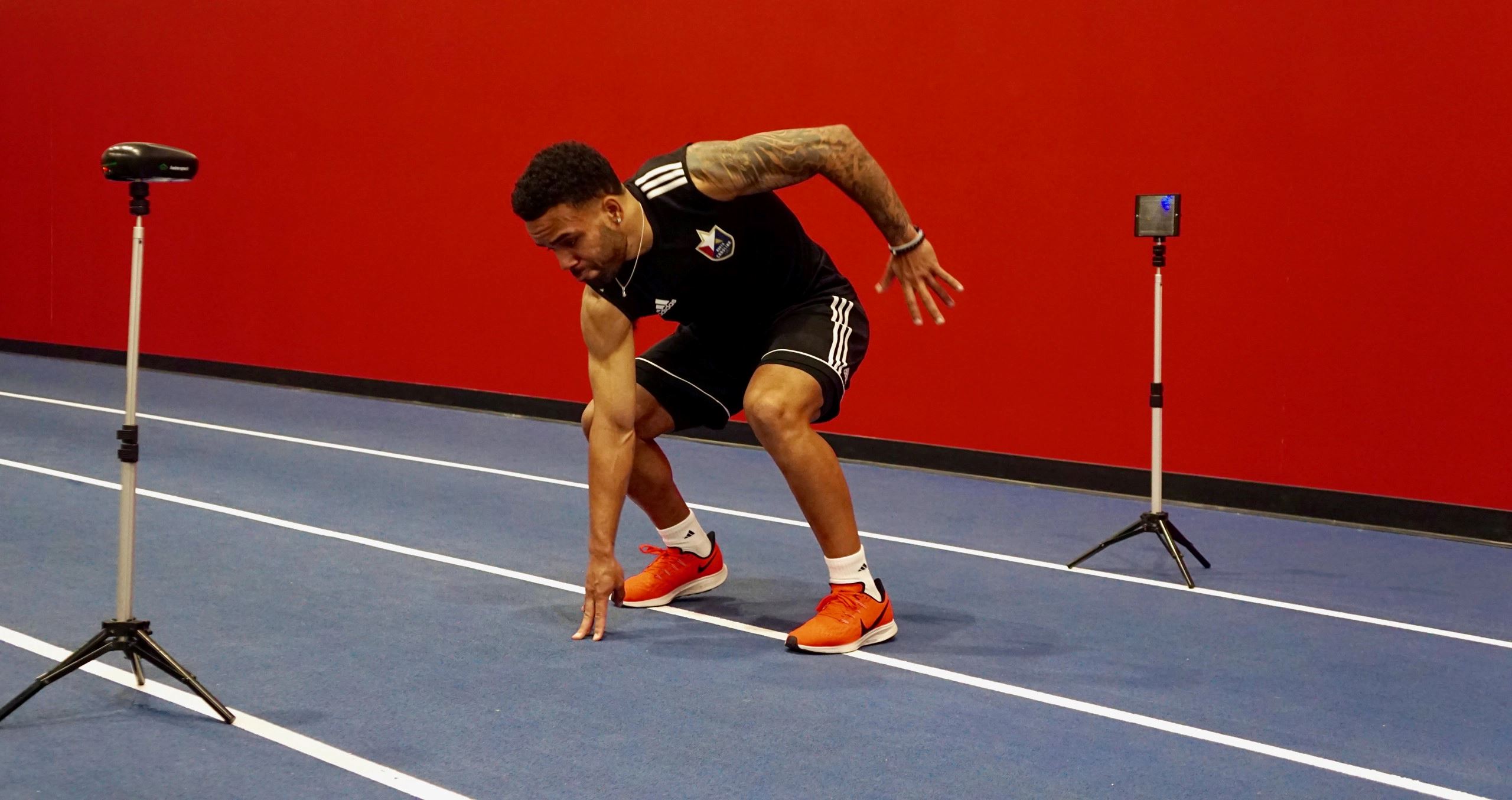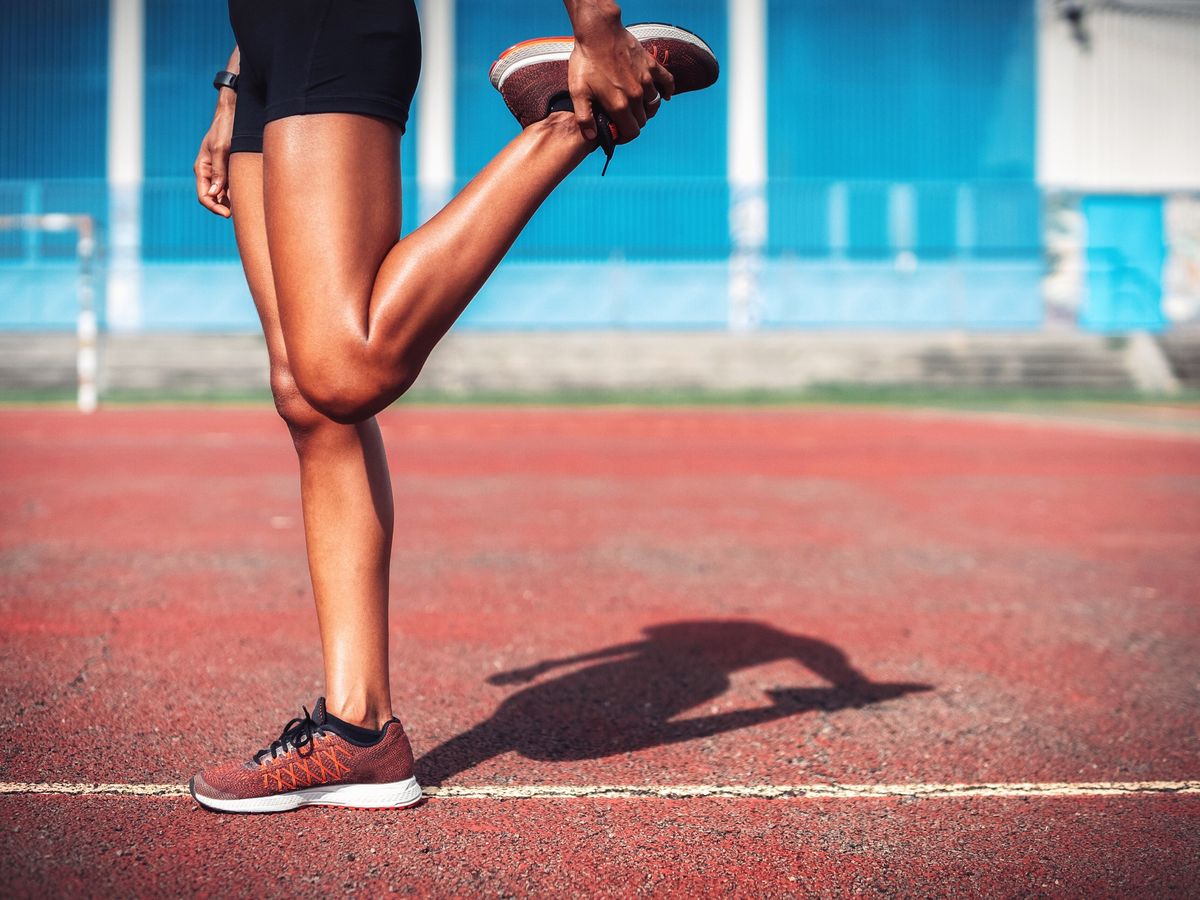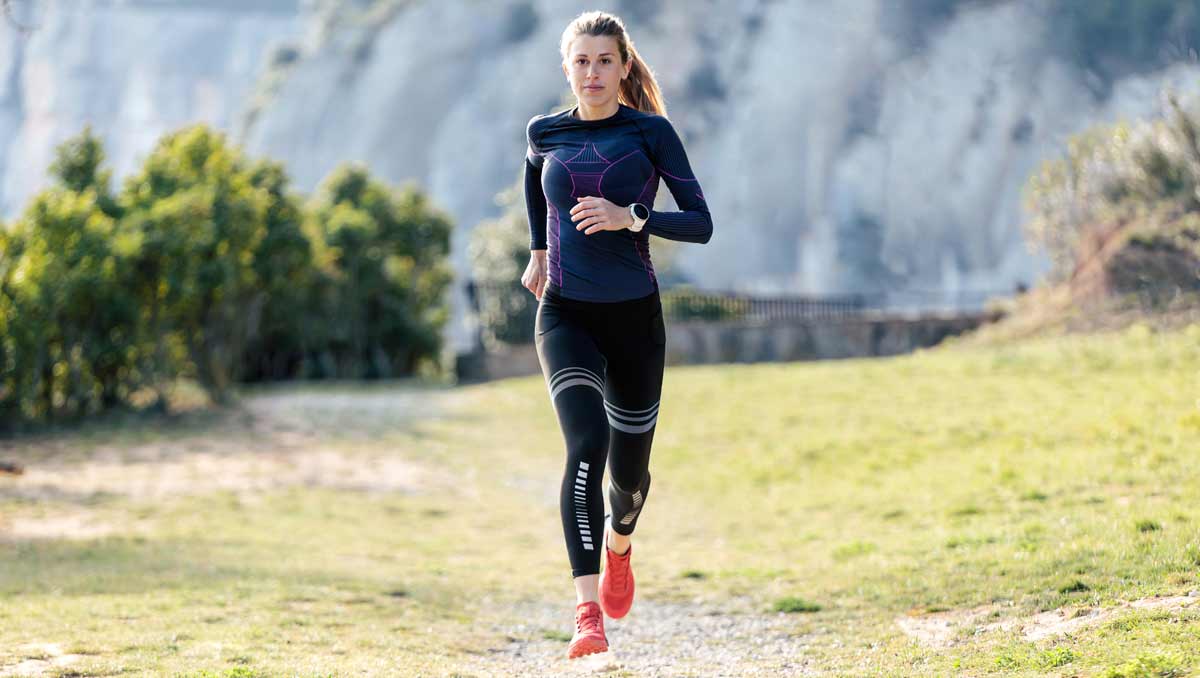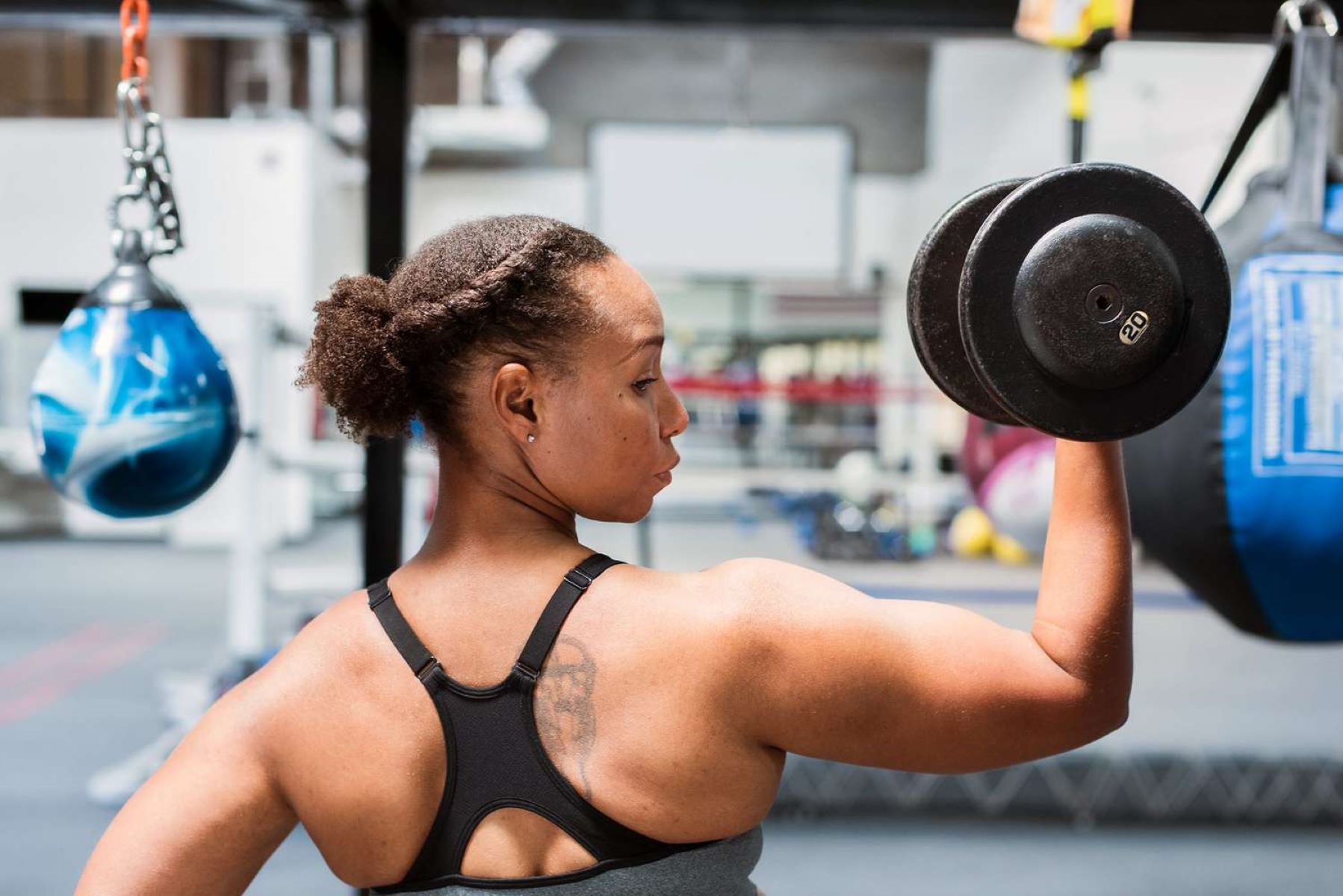Home>Misc>Featured>What Area Of The Body Is Most Targeted During The Single-Leg Squat To Row Exercise?
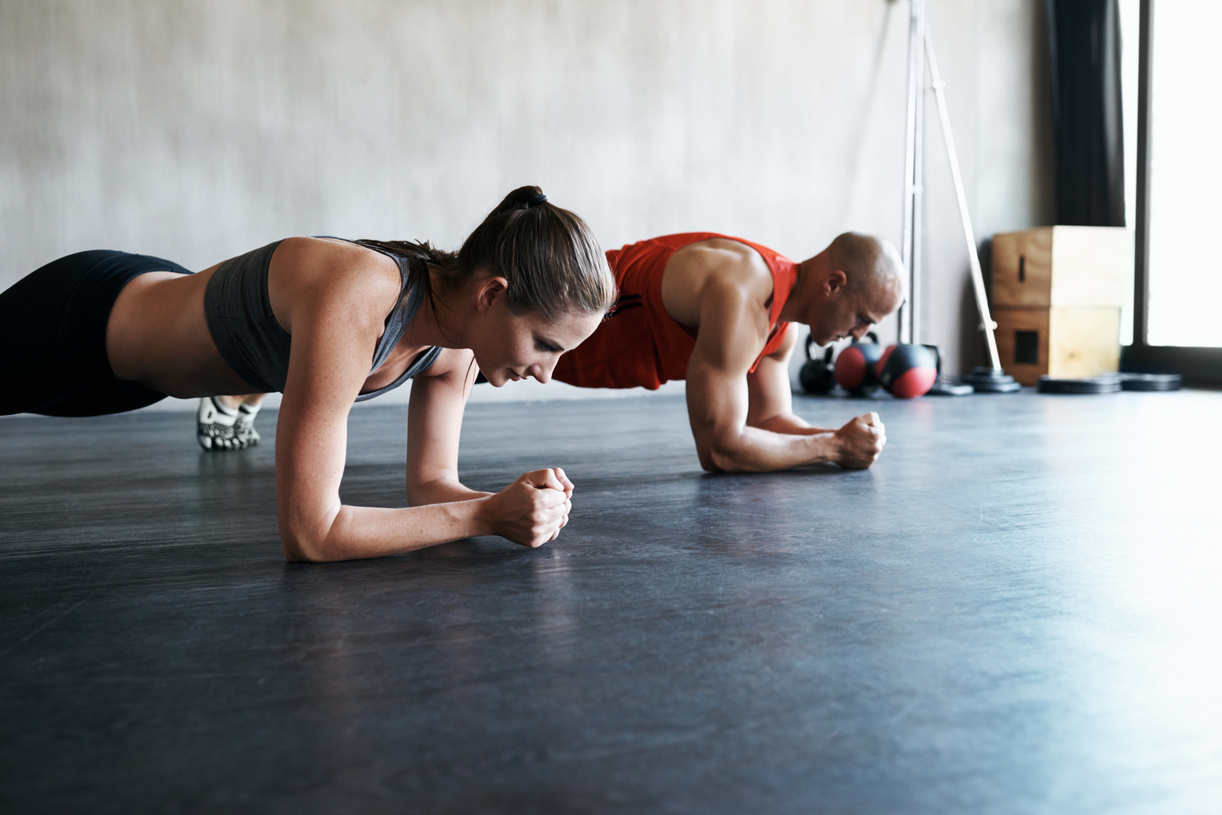

Featured
What Area Of The Body Is Most Targeted During The Single-Leg Squat To Row Exercise?
Published: October 1, 2023
Discover which area of the body is targeted the most during the single-leg squat to row exercise. Featured insights on maximizing your workout routine.
Introduction
The Single-Leg Squat to Row exercise is a compound movement that integrates lower body strength and stability with upper body pulling strength. It is a challenging exercise that targets multiple muscles and improves overall functional fitness. Whether you are a beginner or an advanced fitness enthusiast, incorporating this exercise into your routine can have numerous benefits.
The Single-Leg Squat to Row is an effective exercise for building strength, balance, and coordination. It involves performing a squat on one leg while simultaneously pulling a resistance band or cable towards your body. This exercise not only activates the lower body muscles, but also engages the back, shoulders, and arms, making it a great full-body workout.
In this article, we will explore the specific muscles involved in the Single-Leg Squat to Row exercise and highlight the targeted areas of the body. We will also discuss the importance of maintaining proper form and technique, as well as the benefits and variations of this exercise.
Whether you are looking to improve your strength, build muscle, or enhance your athletic performance, the Single-Leg Squat to Row exercise can be a valuable addition to your training routine. So, let’s dive in and discover the benefits of this dynamic exercise and how it can help you achieve your fitness goals.
Overview of the Single-Leg Squat to Row Exercise
The Single-Leg Squat to Row exercise is a compound movement that combines elements of a squat and a row, making it a comprehensive and efficient exercise for targeting multiple muscle groups. It is a functional exercise that mimics real-life movements, making it highly practical for everyday activities and sports performance.
To perform the Single-Leg Squat to Row, you will need a resistance band or a cable machine with a handle. Begin by standing on one leg, with the other leg extended slightly behind you for balance. Hold the handle or resistance band in both hands with your arms extended in front of you. Lower your body into a single-leg squat position while simultaneously pulling the handle or resistance band towards your chest, engaging your back muscles.
This exercise primarily targets the lower body muscles, including the quadriceps, hamstrings, and glutes. The squatting motion engages the quads and glutes to stabilize and control the movement, while the hamstrings work to decelerate the downward phase of the squat. As you return to the starting position, the leg and glute muscles are activated to extend the hip and drive the body upward.
Additionally, the Single-Leg Squat to Row engages the upper body muscles, particularly the back, shoulders, and arms. The rowing motion targets the upper back muscles, such as the latissimus dorsi and rhomboids, as well as the biceps and shoulders. The pulling action helps to improve posture, strengthen the back muscles, and enhance upper body strength.
Overall, the Single-Leg Squat to Row exercise offers a comprehensive workout for the entire body. It combines lower body strength and stability with upper body pulling strength, providing an effective way to build functional strength and coordination. It can be adapted to various fitness levels and can be modified by adjusting the resistance or adding variations to keep challenging your muscles.
Muscles Involved in the Single-Leg Squat to Row Exercise
The Single-Leg Squat to Row exercise is a compound movement that targets a wide range of muscles in the body. By combining the squat and rowing motions, this exercise engages both the lower and upper body, making it a highly effective full-body workout. Let’s take a closer look at the specific muscles that are involved in this exercise.
1. Quadriceps: The quadriceps, located on the front of the thigh, are one of the primary muscles involved in the Single-Leg Squat to Row exercise. They are responsible for extending the knee joint during the squatting phase, helping you to lower your body and maintain balance.
2. Hamstrings: The hamstrings, located on the back of the thigh, also play a significant role in this exercise. They assist in the knee flexion during the squatting phase and work eccentrically to control the movement as you descend into the squat position.
3. Glutes: The gluteal muscles, including the gluteus maximus, medius, and minimus, are heavily recruited during the Single-Leg Squat to Row exercise. They are responsible for stabilizing the hip joint and driving the body upward from the squat position.
4. Calves: The gastrocnemius and soleus muscles in the calves are involved in maintaining balance and stability during the exercise. They help to control the movement as you lower and raise your body.
5. Upper Back Muscles: The rowing motion in the Single-Leg Squat to Row exercise engages the upper back muscles, including the latissimus dorsi, rhomboids, and trapezius. These muscles are responsible for pulling the handle or resistance band towards the chest, helping to improve posture and strengthen the upper back.
6. Biceps and Forearms: The biceps brachii in the front of the upper arm and the muscles in the forearm are activated during the rowing motion. They assist in pulling the handle or resistance band towards the body.
7. Shoulders: The deltoid muscles in the shoulders are involved in stabilizing and controlling the movement during the Single-Leg Squat to Row exercise. They work together with the upper back muscles to pull the handle or resistance band towards the chest.
In summary, the Single-Leg Squat to Row exercise targets a variety of muscles, including the quadriceps, hamstrings, glutes, calves, upper back muscles, biceps, forearms, and shoulders. By engaging these muscles simultaneously, this exercise promotes functional strength, stability, and coordination.
Targeted Areas of the Body during the Single-Leg Squat to Row Exercise
The Single-Leg Squat to Row exercise is a dynamic movement that targets several areas of the body, working multiple muscle groups simultaneously. This comprehensive exercise provides numerous benefits and is an excellent addition to any fitness routine. Let’s explore the specific areas of the body that are targeted during this exercise.
1. Lower Body: The Single-Leg Squat to Row primarily targets the lower body muscles. The quadriceps, hamstrings, and glutes are heavily engaged during the squatting phase of the exercise. These muscles work together to lower and raise the body, providing strength, stability, and power to the lower extremities.
2. Core: The core muscles, including the abdominals, obliques, and lower back, play a crucial role in maintaining proper posture and stability during the Single-Leg Squat to Row. As you perform the exercise, these muscles work to stabilize the spine and pelvis, promoting a strong and supportive core.
3. Upper Back: The rowing motion in the Single-Leg Squat to Row exercise targets the muscles of the upper back, including the latissimus dorsi, rhomboids, and trapezius. These muscles are responsible for pulling the handle or resistance band towards the body, promoting a strong and defined upper back.
4. Shoulders: The deltoid muscles in the shoulders are involved in stabilizing and controlling the movement during the Single-Leg Squat to Row exercise. These muscles work together with the upper back muscles to pull the handle or resistance band towards the chest, promoting shoulder strength and stability.
5. Arms: The biceps and forearms contribute to the pulling action in the Single-Leg Squat to Row exercise. As you perform the rowing motion, these muscles are engaged and strengthened, promoting increased arm strength and definition.
6. Balance and Stability Muscles: Since the Single-Leg Squat to Row is performed on one leg, it also engages the muscles responsible for balance and stability. The calves, ankles, and smaller muscles surrounding the knee and hip joints are activated to maintain stability throughout the exercise.
By targeting these specific areas of the body, the Single-Leg Squat to Row exercise provides a well-rounded workout, promoting strength, stability, and muscular development. Incorporating this exercise into your fitness routine can help you achieve a balanced physique and improve overall functional fitness.
Importance of Proper Form and Technique
When performing any exercise, including the Single-Leg Squat to Row, maintaining proper form and technique is essential. Proper form ensures that you target the intended muscles effectively, minimize the risk of injury, and maximize the benefits of the exercise. Here’s why proper form and technique are crucial when performing the Single-Leg Squat to Row.
1. Muscle Engagement: Proper form ensures that the intended muscles are engaged throughout the exercise. By performing the movement with correct alignment and positioning, you optimize muscle activation and recruitment, allowing you to reap the full benefits of the exercise.
2. Injury Prevention: Incorrect form can put unnecessary strain on joints, ligaments, and muscles, increasing the risk of injury. By maintaining proper form, you align your body in a way that promotes safe and efficient movement, reducing the risk of strains, sprains, and other injuries.
3. Core Stability: Proper form during the Single-Leg Squat to Row requires maintaining a strong and stable core. Engaging the core muscles helps stabilize the spine, pelvis, and hips, ensuring that the exercise is performed safely and effectively. A stable core also improves overall balance and coordination.
4. Joint Alignment: Proper form ensures that the joints are aligned correctly, reducing stress on the joints and promoting optimal movement. This is particularly important for the knees, hips, and shoulders, which are heavily involved in the Single-Leg Squat to Row exercise. Proper joint alignment helps prevent overloading and reduces the risk of joint pain or dysfunction.
5. Enhanced Results: When you perform the Single-Leg Squat to Row with proper form and technique, you maximize the effectiveness of the exercise. Your muscles are engaged in the correct way, allowing for greater strength gains, muscle development, and overall improvements in fitness.
To maintain proper form during the Single-Leg Squat to Row exercise, follow these guidelines:
- Keep your back straight and chest lifted throughout the movement.
- Engage your core and maintain a stable pelvis.
- Focus on maintaining proper balance on the supporting leg.
- Keep your knee aligned with your toes during the squatting phase.
- Pull the resistance band or handle towards your chest, engaging the upper back muscles, while keeping your elbows close to your body.
- Control the movement and avoid using momentum or excessive swinging.
In summary, performing the Single-Leg Squat to Row exercise with proper form and technique is crucial for maximizing its benefits and reducing the risk of injury. By focusing on maintaining proper alignment, engaging the correct muscles, and moving with control, you can achieve optimal results and progress safely in your fitness journey.
Benefits of the Single-Leg Squat to Row Exercise
The Single-Leg Squat to Row exercise offers a multitude of benefits for individuals looking to improve their strength, balance, and overall fitness. Incorporating this exercise into your routine can yield significant results. Here are some of the key benefits of the Single-Leg Squat to Row exercise:
1. Full-Body Strength: The Single-Leg Squat to Row is a compound exercise that targets multiple muscle groups simultaneously, providing a comprehensive full-body workout. This exercise engages the lower body, core, upper back, shoulders, and arms, helping to build overall strength and muscular endurance.
2. Functional Fitness: The Single-Leg Squat to Row exercise involves movements that mimic real-life activities, making it highly practical for everyday tasks and sports performance. By training multiple muscle groups and improving coordination, this exercise enhances functional fitness, making it easier to perform daily activities with greater ease and efficiency.
3. Balance and Stability: Since the Single-Leg Squat to Row is performed on one leg, it requires a strong sense of balance and stability. By engaging the core and smaller stabilizing muscles, this exercise improves balance and proprioception, helping to prevent falls and injuries.
4. Posture Improvement: The rowing motion in the Single-Leg Squat to Row exercise targets the upper back muscles, promoting better posture. Strengthening these muscles helps to pull the shoulders back and counteract the effects of prolonged sitting or sedentary lifestyles.
5. Core Engagement: The Single-Leg Squat to Row exercise requires core stability to maintain proper form. By engaging the muscles of the abdomen, lower back, and hips, this exercise strengthens the core and improves core stability, which is essential for overall strength and injury prevention.
6. Time Efficiency: The Single-Leg Squat to Row exercise combines two movements into one, making it a time-efficient workout option. By integrating the squat and rowing motions, you can target multiple muscle groups in a single exercise, making the most of your workout time.
7. Versatility and Accessibility: The Single-Leg Squat to Row exercise can be modified and adapted to suit various fitness levels and equipment availability. It can be performed using bodyweight, resistance bands, or cable machines, allowing for versatility in training settings.
8. Muscle Symmetry: As a unilateral exercise, the Single-Leg Squat to Row helps to address muscle imbalances between the left and right sides of the body. By performing the exercise on each leg individually, you can identify and correct any asymmetries, promoting balanced muscular development.
Incorporating the Single-Leg Squat to Row exercise into your fitness routine can lead to improved strength, balance, posture, and overall functional fitness. Whether you are a beginner or advanced fitness enthusiast, this exercise offers numerous benefits that can support your fitness goals and enhance your overall well-being.
Variations and Modifications of the Single-Leg Squat to Row Exercise
The Single-Leg Squat to Row exercise can be adapted and modified to suit different fitness levels, goals, and equipment availability. These variations and modifications provide opportunities for progression, challenge, and targeting specific muscle groups. Here are some options to consider:
1. Bodyweight Single-Leg Squat to Row: If you are new to the exercise or do not have access to resistance bands or cable machines, you can perform the Single-Leg Squat to Row using just your bodyweight. Focus on maintaining proper form and engaging the target muscles as you lower into the squat and pull your arms towards your chest.
2. Resistance Band Single-Leg Squat to Row: Using a resistance band adds an extra challenge to the exercise by providing resistance throughout the movement. Anchor the band securely and hold the handles with your arms extended in front of you. Perform the Single-Leg Squat to Row while maintaining tension in the band, ensuring controlled movements.
3. Dumbbell Single-Leg Squat to Row: Instead of a resistance band, you can use dumbbells to add resistance to the exercise. Hold a dumbbell in each hand, allowing your arms to hang by your sides. Perform the Single-Leg Squat to Row while holding on to the dumbbells and maintaining proper form and control.
4. Cable Machine Single-Leg Squat to Row: If you have access to a cable machine, you can perform the exercise using a cable attachment and handle. Set the cable at an appropriate height and face away from the machine. Hold the handle with your arms extended in front of you and perform the Single-Leg Squat to Row, maintaining tension in the cable throughout the movement.
5. Elevated Single-Leg Squat to Row: To increase the challenge and engage the muscles in a different way, perform the exercise with your elevated back leg resting on a step or bench. This variation places more emphasis on the working leg and requires greater stability and balance.
6. Alternating Single-Leg Squat to Row: Instead of performing the exercise on one leg at a time, you can alternate between legs with each repetition. This variation adds an element of dynamic movement and coordination, challenging both the lower and upper body muscles.
Remember, it is essential to choose a variation that suits your fitness level and ensures proper form and control. Progress gradually by increasing resistance, using additional equipment, or incorporating variations that challenge your muscles in different ways.
It is also recommended to consult with a qualified fitness professional to ensure proper technique and minimize the risk of injury when performing these variations and modifications.
By incorporating variations and modifications into your Single-Leg Squat to Row exercise routine, you can keep your workouts fresh, challenge different muscle groups, and continue progressing towards your fitness goals.
Conclusion
The Single-Leg Squat to Row exercise is a highly effective compound movement that targets multiple muscle groups and offers numerous benefits for overall fitness and strength. By combining the squat and rowing motions, this exercise engages the lower body, core, upper back, shoulders, and arms, providing a comprehensive full-body workout.
Maintaining proper form and technique during the Single-Leg Squat to Row is crucial for maximizing results and minimizing the risk of injury. By focusing on muscle engagement, core stability, and joint alignment, you can optimize the effectiveness of the exercise and target the intended muscles efficiently.
The benefits of the Single-Leg Squat to Row exercise include improved full-body strength, enhanced functional fitness, better balance and stability, improved posture, time efficiency, versatility, and muscle symmetry. Whether you are a beginner or advanced fitness enthusiast, this exercise can be modified and adapted to suit your fitness level, goals, and equipment availability.
To progress in your Single-Leg Squat to Row practice, consider incorporating variations such as bodyweight, resistance band, dumbbell, or cable machine options. These variations provide opportunities for challenge, progression, and targeting specific muscle groups, supporting your fitness journey.
In conclusion, the Single-Leg Squat to Row exercise is an excellent addition to any fitness routine. By incorporating this exercise and focusing on proper form and technique, you can achieve greater strength, stability, balance, and muscular development. So, step up your workouts and experience the powerful benefits of the Single-Leg Squat to Row exercise today!
